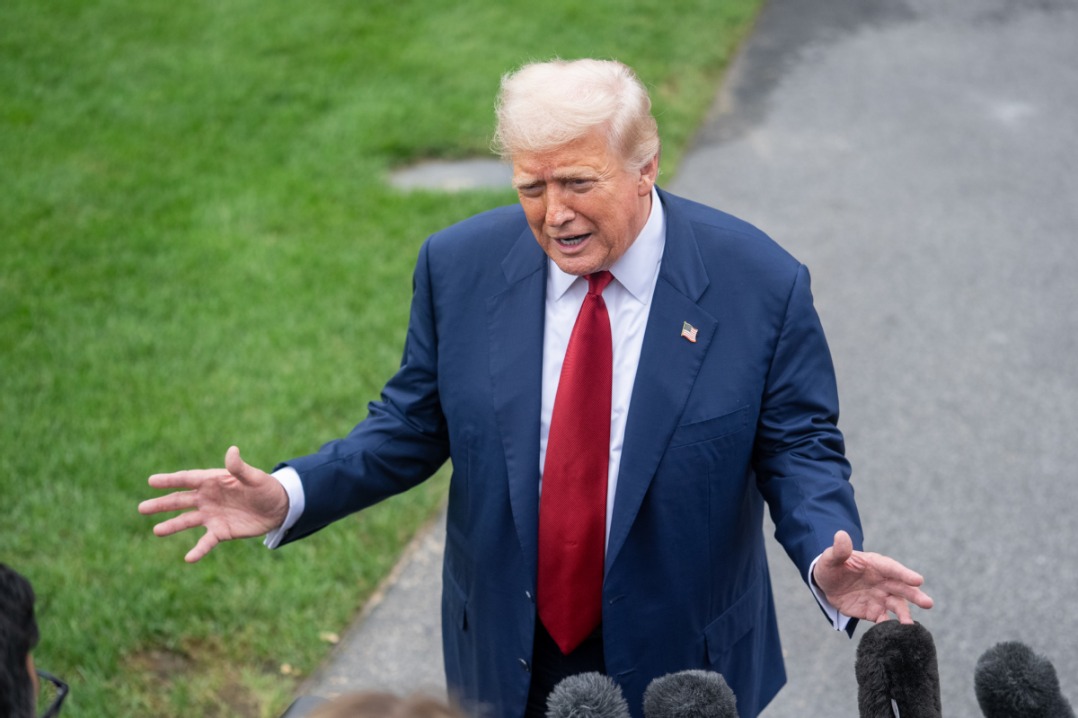2017 bodes well for Chinese takeovers

New approach sees buyers opting for long-term brand enhancement rather than an overeager grab for profits
Now that we have entered 2017 it may be easier to review dispassionately the business year behind, and to look ahead. In doing so, a more pragmatic view goes beyond the much-hyped macro indicators of gross domestic product and the consumer price index.
Most significant throughout 2016 was the number and size of foreign takeovers by Chinese companies. The total value of Chinese mergers and acquisitions of foreign companies reached a record $247.2 billion (234.3 billion euros; 201.5 billion) in 2016. If this figure is not staggering enough, then how about the year-on-year percentage increase, which stands at an amazing 142 percent.
Before discussing key deals that took place last year and then looking ahead at what to expect throughout 2017, the changing nature of these takeovers needs highlighting.

Takeovers involving raw material purchases and other supplies that are needed to fuel factory production now represent a far smaller percentage of Chinese acquisition activity. The focus now is much more on consumer branding and the technological know-how needed to fuel domestic consumption.
It is now estimated that this new approach, set to continue as China's economy continues its transition from low-cost production and exporting to domestic consumption of premium brands, accounts for approximately 50 percent of all Chinese company takeovers of foreign brands.
Last year also highlighted major change in a variety of industries now targeted by Chinese companies in their foreign firm acquisition strategies. Even more significantly, last year witnessed the further emergence of privately owned Chinese companies planting a firm footprint on the international M&A scene.
Going back only as far as 2013, Chinese takeover deals were heavily dominated by the state-owned sector, which typically went on the hunt for copper mines in Africa, iron ore producers in Australia and major players in the Canadian energy sector.

Europe is now very much the focus of increasingly ambitious and entrepreneurial privately- owned Chinese enterprises, with recent acquisitions of French fashion houses, Italian football teams and UK luxury brands.
From finance to food and fashion to football, the increasing variety of industries targeted has been more than matched by the increasing amounts invested in huge takeovers of foreign companies and their branded products by Chinese companies.
Last year saw the largest takeover to date by a Chinese company of a foreign firm. In August, Chinese chemical giant ChemChina secured the acquisition of Swiss pesticide and seed producer Syngenta for a formidable 43 billion ($53 billion; 50 billion euros).
The European focus for Chinese takeover targets last year also saw Tencent, part of the increasingly dominant Chinese internet sector, splash out almost $9 billion in July on Finnish mobile game development company Supercell, easily Tencent's largest foreign takeover so far.
Acquisitions by Chinese firms across Europe last year totaled a whopping $76.5 billion, comfortably the largest merger and acquisition investment sum compared with the Americas and Asia.
Companies from Western Europe, and Germany in particular, appear to stand out as the favored targets for takeover.
Further examination of Chinese company merger and acquisition activity last year reveals a far more mature, professional approach in which takeover targets were screened with the utmost scrutiny before the launch of any takeover bid.
Takeovers are also seen increasingly as partner brands - where considerable care is taken in post-acquisition integration. They are not simply public trophies.
But will this Chinese company-led and European-focused M&A spree continue throughout 2017? In short, the answer is not only a resounding "yes", but even greater growth could take place.
Here are some of the reasons behind what could be another record year for Chinese company takeovers:
US President Trump. Despite huge uncertainty over the soon-to-be appointed president, it is clear that the US economy could become far less open for business with the outside world - Asia and China in particular. This could leave Europe, already the clearly favored target for overseas expansion by Chinese companies, an even more attractive place.
Europe's attractiveness is further enhanced when the likely industry targets for Chinese companies are considered. Top among the most high-profile takeovers last year are fashion, football, finance and technology, and major Western European economies offer a rich supply of established global brands in each of these areas. For example, Europe boasts three of the four widely recognized fashion capitals in the world: London, Paris and Milan. Consequentially many of the top global fashion brands are European.
Chinese investment in football clubs really took off last year. For example, Chinese consumer electronics retailer Suning bought a majority stake in Italian football giant Inter Milan in June last year for $307 million, and one of the biggest English football clubs, Aston Villa, also became Chinese owned.
Further forays into the most-developed football leagues around the world is highly likely, and once again European football dominates. The English Premier League, the German Bundesliga and the French Ligue1, as well as the Italian Serie A and the Spanish La Liga, contain many of the most highly valued football clubs in the world.
Europe's financial sector will also continue to prove attractive to potential Chinese investors. Takeovers in Europe's ailing banking sector are seen as far less politically sensitive than the US banking industry.
Global technology brands, much-coveted by Chinese industry as a vital aid in their modernization efforts, can also be found in abundance across Europe. This goes some way to explaining the attractiveness of German industries as potential takeover targets. German companies and the German government continue to welcome investment from China, and Chinese companies appreciate just how much the adoption of the most advanced technologies in their industry will improve their competitiveness.
Of course there are concerns that too much outbound investment may lead to government attempts to curb activities in order to protect the currency. But such concerns do not stand up to scrutiny. Further transition toward the adoption across Chinese industry of a high-investment, high-quality and premium branding business culture will not happen if any kind of currency reliance continues.
It is, therefore, unlikely that currency concerns will lead to a limitation of overseas involvement by Chinese companies - especially in acquisition activity.
So what should European businesses make of this inexorable influx of takeovers by Chinese companies and how might they actually benefit?
Crucial for European business has been the changing approach toward takeover targets by Chinese firms and the post-acquisition process. In both case, partnerships and a long-term perspective appear to have usurped the previously overeager, short-term acquisitive attitude of Chinese companies.
Chinese companies and their leaders are no longer trophy hunting when it comes to takeovers of European businesses and their brands. Instead, they increasingly see growth via foreign brand acquisition as part of a clear, sustainable growth strategy, where long-term market share and customer satisfaction trump without trouble any short-term financial objectives.
Chinese companies, while keen to learn from their European takeover targets, also appear to accept that established global brands should be left as individual product brands with no or little public association between the brand and its new corporate owner.
During 2017 and beyond, therefore, European brands could benefit substantially from Chinese corporate takeover investment, which - if last year's M&A activities are indicative of future activity - should be seen as much-needed fuel for brand building.
The author is a visiting professor at the University of International Business and Economics in Beijing and a senior lecturer at Southampton University. The views do not necessarily reflect those of China Daily.
(China Daily European Weekly 01/13/2017 page10)
Today's Top News
- Unified national market a new growth launchpad
- US deal a structural challenge for Japan
- Industrial prowess of China a subject of serious study
- US new tariffs 'unfair': Experts
- NDRC recalibrating steps to drive growth, boost demand
- Wartime hero's legacy fortifies Sino-UK bond






























